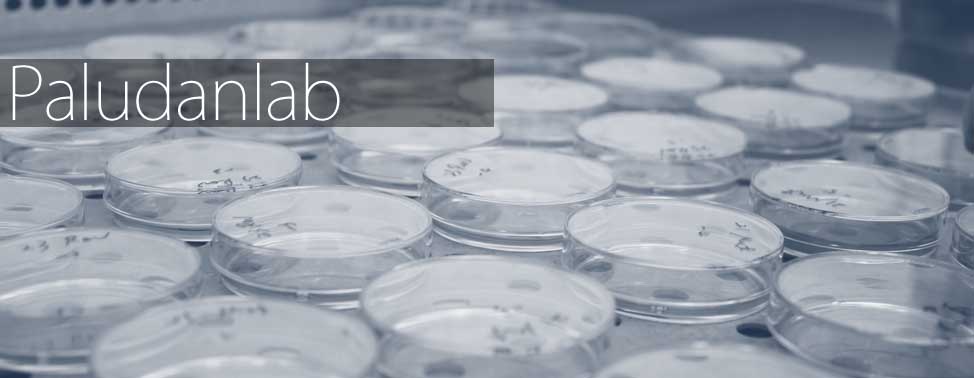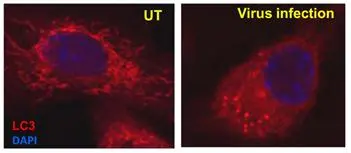Research
Viruses are small infectious agents that replicate inside host cells, due to the need for host factors for propagation. Diseases caused by viruses include influenza, hepatitis, AIDS, encephalitis, genital herpes, and different cancer forms (e.g. cervical cancer and hepatocellular carcinoma). The ability of the organism to detect viral infection is critical for elimination of the infection and prevention of disease. The innate immune system utilizes pattern recognition receptors (PRRs), to recognize conserved pathogen-associated molecular patterns (PAMPs) on viruses and mount protective responses. These include activation of antiviral functions, such as the cytokines interferon (IFN)-a/b, and natural killer cells.
In this laboratory we have ongoing projects in three closely related areas:
A. Mechanisms of viral detection by the innate immune system and viral means to evade these processes.
B. Interactions between the innate immune system and basic cellular processes, and the impact on host defense and development of disease.
C. Mechanisms of host defense in animal models for human diseases.
A. Detection of viruses by the innate immune system
Several classes of PRRs have been described. They detect microbial infections on the cell surface, in endosomes, and in the cytoplasm. The Toll-like receptors (TLR)s sense viruses on the cell surface as well as viral nucleotides in endosomes, the RIG-I-like receptors (RLRs) detect viral RNA structures in the cytoplasm, and the DNA sensors detect viral DNA in the cytoplasm (and possibly the nucleus).
We are interested in knowing which PRRs are responsible for detection of viruses in different cell types and to identify and characterize the viral PAMPs. Moreover, our work aims at deciphering the virus-activated intracellular signaling and gene expression programs and also to learn how viruses evade and exploit these responses. Finally, the intracellular dynamics of virus detection and signaling processes is emerging as an important parameter in the innate immune response, and we are studying this phenomenon during viral infection.
B. Interaction between the innate immune system and basic cellular processes.
It has long been known that infections activate not only “classical” immune reactions but also lead to stimulation of e.g. production of reactive oxygen species, autophagy, DNA damage responses, calcium flux, ER stress, and proteasome activation. It is now emerging that these activities can play a role in the immune response, but the phenomenon and underlying mechanisms are largely undescribed. We are interested in characterizing the interaction between the innate immune system and the basic cellular processes activated during virus infection, and also in determining how they may impact on the immune response.
C. In vivo models of viral infections
The immune response to infections can have both protective and deleterious effects. Therefore, the mechanisms that determine whether the immune response promotes or prevents disease are complex processes, which can best be approached experimentally in animal model systems. With focus on mouse models for herpes simplex virus infections, we are studying the role and mechanism of action of the innate immune system in the host response to infection. Key questions under investigation include: (i) Role and mechanism of specific PRRs and innate recognition systems in control of HSV at epithelial surfaces and in the central nervous system, (ii) Immune mechanisms responsible for prevention/restriction of neuroentry and spread during HSV infection, (iii) cellular effector mechanisms of antiviral activities and inflammation during infection.




